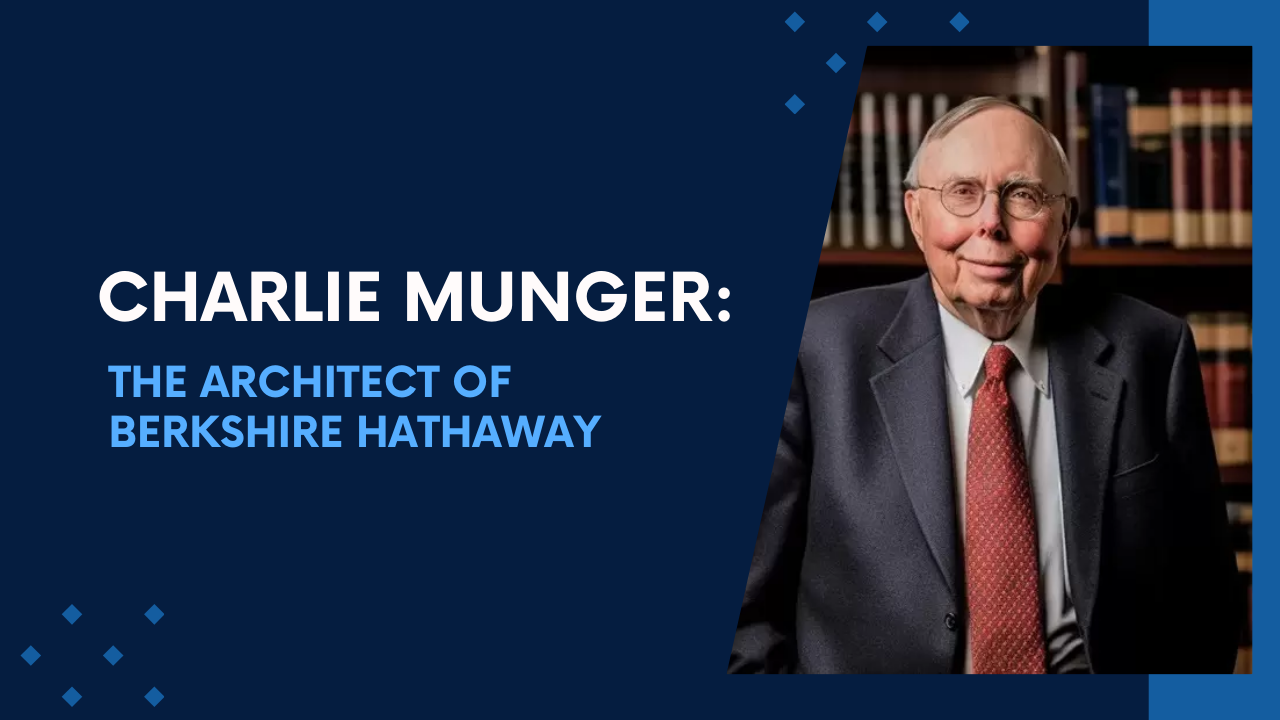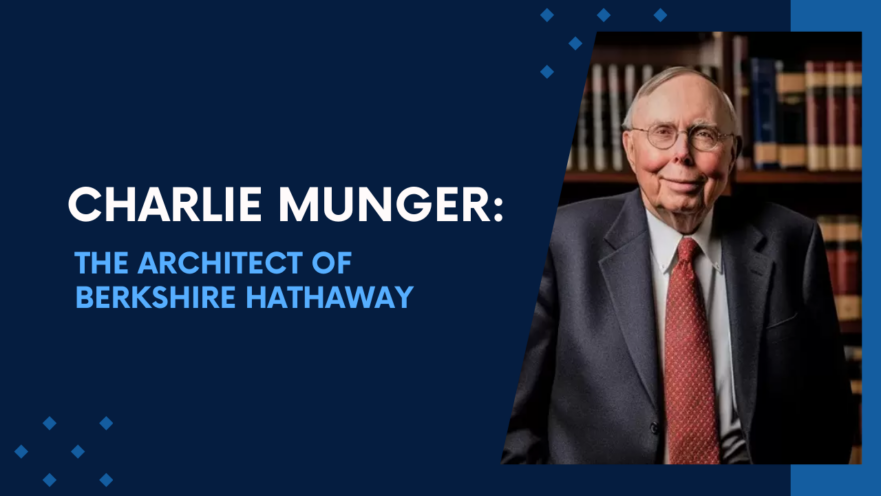
Charlie Munger, Vice Chairman of conglomerate Berkshire Hathaway passed away last November, just 30 days shy of his 100th birthday. At that time, there were several articles written about his passing in (mostly) financially related journals, but there was no significant outpouring of sentiment from the public.
And that’s exactly the way Charlie would have wanted it.
His life and legacy are getting a renewed focus however with the recent publication of Berkshire Hathaway’s annual report and the shareholder letter that Chairman Warren Buffett includes each year.
We will dive into that letter in more detail in a bit, but first let’s look back at Charlie’s life.
Despite being the long time Vice Chairman of the financial behemoth that is Berkshire Hathaway, having written at least seven books himself, and had well over a dozen written about him, most folks outside the financial world couldn’t tell you who he was, or why his time on Planet Earth made a difference in people’s lives.
Though he was a deep thinker, philosopher, wise investor and self-described “big brother” to his seven years younger and more famous business partner, Charlie was content to remain in the shadows.
Born in Omaha, Nebraska on New Years Day 1924, he and Warren grew up together in the same small mid-western community. Despite having both worked part time as boys at Warren’s grandfathers’ grocery store, they never actually met as children. Many decades later when referring to their time toiling at the store, Charlie quipped they both agreed the biggest lesson they learned following their time in that job was, “We didn’t want to work in a grocery store!”
After studying mathematics in college and a stint in the Army Air Corps during World War II, Charlie earned a law degree from Harvard in 1948. He co-founded a law firm in Los Angeles that still bears his name, but found he preferred the enjoyment of investing better, and that eventually became his primary focus.
He and Warren met for the first time in 1959 when Charlie was in Omaha to close his late father’s legal practice. Many years later, they would both say they immediately liked each other and found they had many things in common. Buffett once commented, “We have minds that work the same way to a great degree. We find the same things humorous, and the things we deplore we agree on.” And on the occasions when they did disagree, Charlie would tell Warren, “Well, you’ll end up agreeing with me because you’re smart and I’m right!”
Charlie returned to California but the two stayed in touch through frequent phone calls and regular, lengthy letters (remember when people wrote letters!). Eventually, they also shared investment ideas and even occasionally bought into the same companies throughout the early 1960s. At one point, they became the two largest shareholders in a trading stamp maker called Blue Chip Stamp Company, and through that acquired See’s Candy, the Buffalo News and Wesco Financial.
But aside from the investments he made with Charlie, Buffett’s investing strategy in those early days was quite different than the style he has become best known for today. As a student of the legendary Value Investor Ben Graham at Columbia University, he became enamored with the process of buying bargain basement stocks when undervalued and selling them when their prices rose to a level that reflected fair value or greater.
Following this philosophy, in 1962 Buffett started buying shares of a troubled textile manufacturing business in New Bedford, Massachusetts named Berkshire Hathaway. He would later call this his “dumbest” stock purchase ever, but eventually gained full control of the company by 1965. As the two continued to correspond, Munger eventually convinced Buffett that buying excellent companies at a fair valuation, and holding onto them was a superior investing strategy to build future wealth.
Buffett has acknowledged that much of the success of Berkshire today can be attributed to the adoption of this philosophy of investing, and the decision to utilize the former textile business as a holding company for the numerous companies and shares of great businesses that make up Berkshire Hathaway today. Most of us could possibly encounter a Berkshire owned, or partially controlled company, on a regular basis as their reach extends into many facets of daily life.
The list of names we may routinely encounter without ever realizing we are patronizing a company owned by the Munger and Buffett conglomerate numbers nearly 70 and includes such familiar brands as GEICO insurance, Long & Foster Real Estate, Fruit of the Loom, Dairy Queen, Pampered Chef, Duracell and Burlington Northern Railroad.
The exterior color of Berkshire’s annual report in years past has been used as a proxy to convey a sense of the tone of Buffett’s annual letter to the shareholders included inside. This year the cover was totally black, in memorial of the passing of its Vice Chairman, and Buffett penned a tribute to Charlie on its first page.
The complete text of the tribute is reproduced here for your benefit.
If Charlie were still with us, I am sure he would have replied to this tribute in the same manner he often did at annual meetings when Warren had finished speaking at length in answer to a shareholder’s question: “I have nothing to add.”
Charlie Munger – The Architect of Berkshire Hathaway
Charlie Munger died on November 28, just 33 days before his 100th birthday.
Though born and raised in Omaha, he spent 80% of his life domiciled elsewhere. Consequently, it was not until 1959 when he was 35 that I first met him. In 1962, he decided that he should take up money management.
Three years later he told me – correctly! – that I had made a dumb decision in buying control of Berkshire. But, he assured me, since I had already made the move, he would tell me how to correct my mistake.
In what I next relate, bear in mind that Charlie and his family did not have a dime invested in the small investing partnership that I was then managing and whose money I had used for the Berkshire purchase. Moreover, neither of us expected that Charlie would ever own a share of Berkshire stock.
Nevertheless, Charlie, in 1965, promptly advised me: “Warren, forget about ever buying another company like Berkshire. But now that you control Berkshire, add to it wonderful businesses purchased at fair prices and give up buying fair businesses at wonderful prices. In other words, abandon everything you learned from your hero, Ben Graham. It works but only when practiced at small scale.” With much back-sliding I subsequently followed his instructions.
Many years later, Charlie became my partner in running Berkshire and, repeatedly, jerked me back to sanity when my old habits surfaced. Until his death, he continued in this role and together we, along with those who early on invested with us, ended up far better off than Charlie and I had ever dreamed possible.
In reality, Charlie was the “architect” of the present Berkshire, and I acted as the “general contractor” to carry out the day-by-day construction of his vision. Charlie never sought to take credit for his role as creator but instead let me take the bows and receive the accolades. In a way his relationship with me was part older brother, part loving father. Even when he knew he was right, he gave me the reins, and when I blundered he never – never –reminded me of my mistake.
In the physical world, great buildings are linked to their architect while those who had poured the concrete or installed the windows are soon forgotten. Berkshire has become a great company. Though I have long been in charge of the construction crew; Charlie should forever be credited with being the architect.






